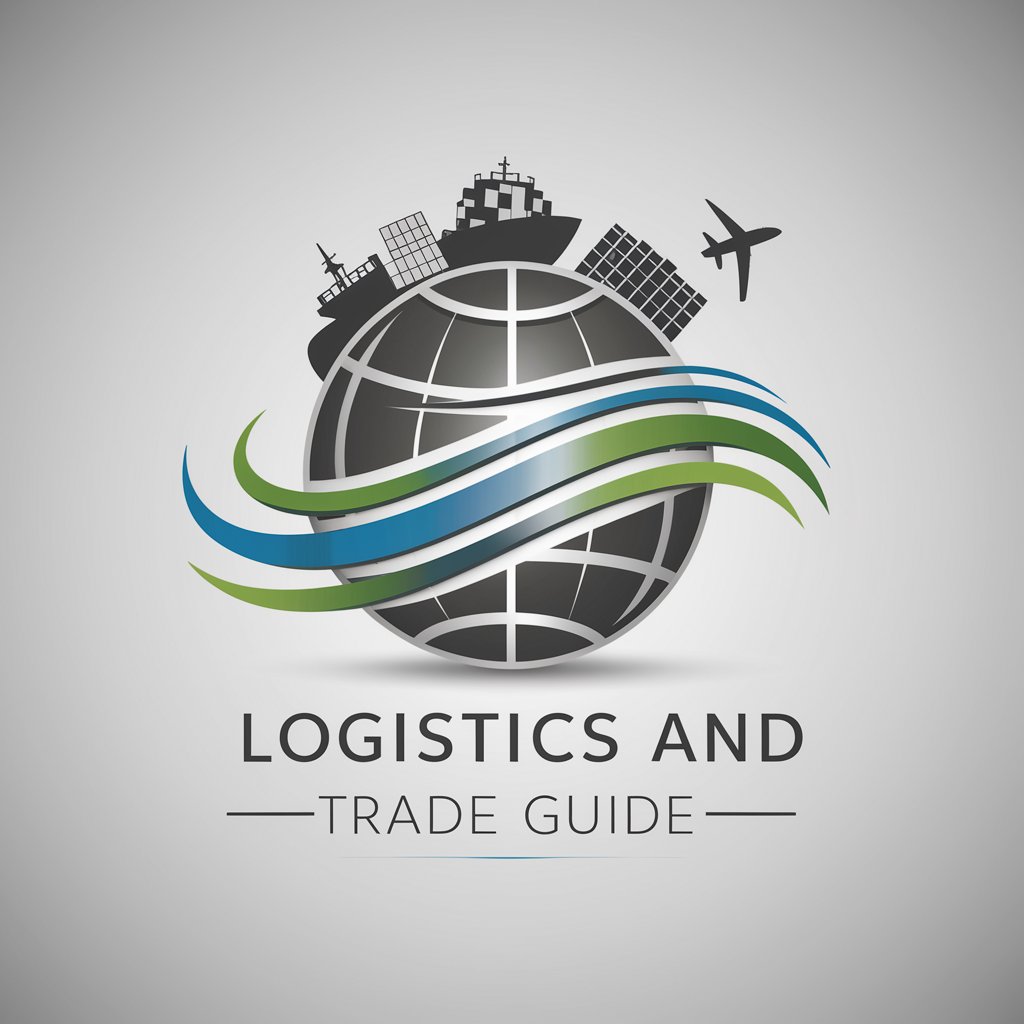Logistics and Trade Guide - Logistics & Trade Insights

Hello! I'm your guide to logistics and international trade.
Navigating Trade with AI-Powered Expertise
Explain the basic concepts of international trade.
What are the key elements of logistics in supply chain management?
How do customs regulations impact international shipping?
Describe the different modes of transportation used in global trade.
Get Embed Code
Understanding Logistics and Trade Guide
Logistics and Trade Guide is designed as a specialized assistant to foster understanding and proficiency in the fields of logistics and international trade. Primarily aimed at beginners, it simplifies complex supply chain processes, customs regulations, shipping methods, and trade principles. Through a gradual introduction of technical concepts, it aims to build a solid foundation for learners, enabling them to navigate the intricate world of global trade and logistics efficiently. For example, it can elucidate the process of cargo shipment from a manufacturer in China to a retailer in the U.S., detailing steps like freight booking, documentation, customs clearance, and last-mile delivery. Powered by ChatGPT-4o。

Key Functions of Logistics and Trade Guide
Educational Resource
Example
Explaining Incoterms, like FOB or CIF, and their implications on cost and risk responsibilities between buyers and sellers.
Scenario
A new entrepreneur planning to import electronics from Germany to Canada might use this to understand the best shipping terms for their business.
Supply Chain Insight
Example
Outlining the steps involved in choosing a reliable logistics provider, including considerations for shipping routes, transit times, and carrier reliability.
Scenario
A small business owner seeking to optimize their supply chain would benefit from understanding how to select and manage freight forwarders and shipping lines.
Customs and Compliance Guidance
Example
Providing detailed walkthroughs on customs procedures, necessary documentation, and strategies to minimize duties and taxes.
Scenario
An importer dealing with complex customs regulations might use this guidance to ensure compliance and avoid delays or penalties.
Target User Groups for Logistics and Trade Guide
Aspiring Entrepreneurs and SME Owners
These individuals benefit by gaining a clear understanding of the logistics involved in setting up and expanding their businesses internationally, helping to navigate shipping, customs, and international market penetration.
Educational Institutions and Students
Students and institutions can use this resource to supplement academic programs related to international business, supply chain management, or global trade, offering practical, real-world insights alongside theoretical knowledge.
Supply Chain Professionals
Professionals in the field can refine their knowledge, stay updated with the latest trends and regulations, and enhance their decision-making skills in logistics and trade operations.

How to Use Logistics and Trade Guide
Start Your Journey
Begin by visiting yeschat.ai to access a free trial of Logistics and Trade Guide without the need for a login or subscribing to ChatGPT Plus.
Identify Your Needs
Consider what you're looking to learn or achieve with Logistics and Trade Guide, such as understanding shipping methods, customs processes, or international trade regulations.
Engage with the Guide
Use specific questions or scenarios when interacting with the Guide to receive tailored, comprehensive explanations and guidance.
Apply the Insights
Leverage the information and advice provided to make informed decisions in your logistics or trade projects, studies, or career.
Repeat and Explore
Continue to consult the Guide for new queries or deeper insights into logistics and trade, enhancing your learning and application over time.
Try other advanced and practical GPTs
TEW AI Designer
Empowering Creativity with AI

Tech-Free Retreat Coordinator
Unplug and Reconnect with Nature

Elite Mentor
AI-Powered Personal Growth Companion

Survivalist
Empowering Survival Through AI

Media Literacy Advocate
Empowering critical media consumption with AI

Logo Generator Pro
Craft Your Brand's Identity with AI

Eclipse Navigator
Illuminate Your Eclipse Experience with AI

Cyber Hive
Empowering cybersecurity with AI innovation

Devil's Advocate
Challenge Ideas, Foster Innovation

Ad Script Wizard
Craft compelling ad scripts with AI

Antique Expert
Uncover History with AI-Powered Antiquity Insights

Bible Study Companion
Unlocking Biblical Wisdom with AI

Frequently Asked Questions about Logistics and Trade Guide
What is Logistics and Trade Guide?
Logistics and Trade Guide is an AI-powered tool designed to provide expert knowledge and guidance on logistics and international trade, making complex concepts accessible to beginners.
How can I benefit from using this Guide?
The Guide offers personalized answers and insights into logistics and trade, helping you navigate shipping, customs, regulations, and market trends effectively.
Can the Guide help with specific logistics problems?
Yes, the Guide can offer solutions and advice for specific logistics challenges, including transportation options, documentation requirements, and cost-saving strategies.
Is this tool suitable for students?
Absolutely, students studying logistics, supply chain management, or international business will find the Guide invaluable for its clear explanations and real-world application tips.
Can professionals use this Guide?
Definitely, professionals in the logistics and trade sectors can leverage the Guide for up-to-date information, industry trends, and continuous learning to enhance their skills and decision-making.
